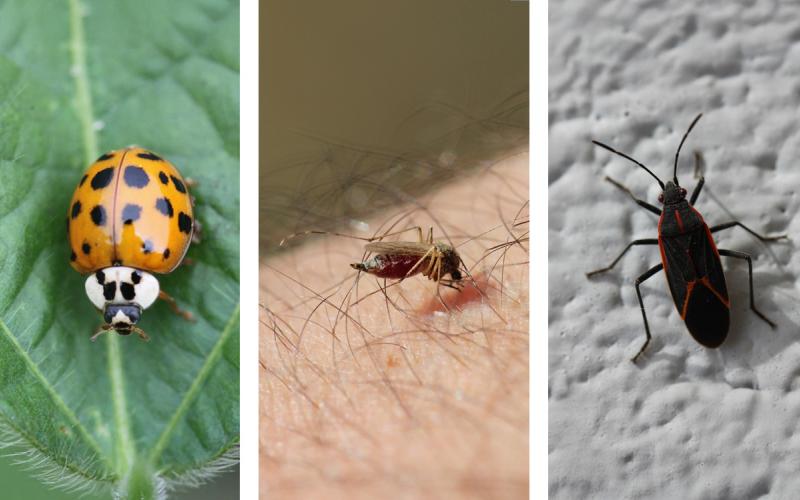Latest Observations
Soybean gall midge have been reported in three counties in South Dakota in the past week: Clay, Union and Lincoln. In addition, I have also received reports of soybean lodging due to last week’s high winds, which has also been attributed to soybean gall midge infestations after lodged plants were confirmed to be infested by soybean gall midge larvae. Because the larvae are already in the plants, we do not recommend spraying foliar insecticides. There is no evidence that foliar insecticides will reduce further infestation. Once this pest is under the epidermis of the plant, it will be very difficult if not impossible to reach it with contact insecticides. At this point, we are hoping to identify fields that are infested and determine the extent of the 2019 infestation.
If you find soybean gall midge infested fields please email us or tweet a picture of the infested plant to @SDSUExt_Insects and include the county where the infestation was observed.
Scouting Strategy
Scouting for soybean gall midge can be as simple as finding wilting or dying plants along the edge of the field or it can be rather difficult if the plants are currently asymptomatic. If you have soybean that recently lodged, you should scout them to determine if a soybean gall midge larvae infestation is the cause of the lodging.
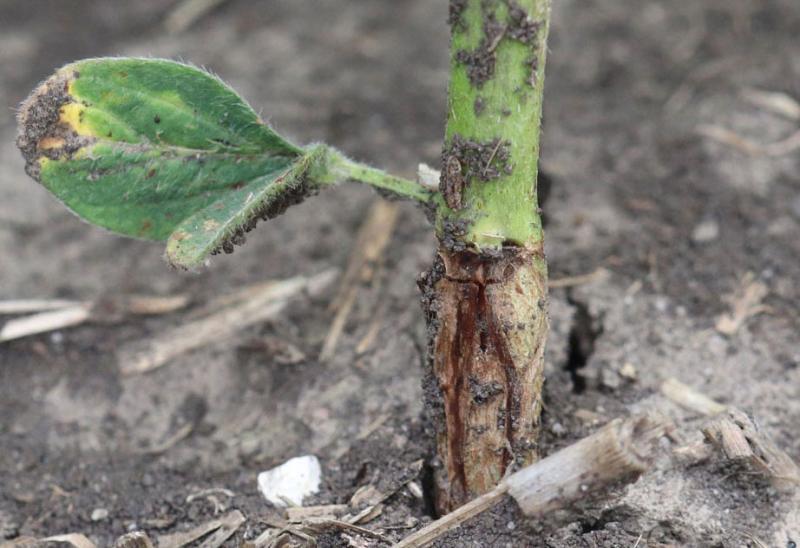
Stem Base
If your plants are currently asymptomatic, the first step is to evaluate the base of the stem near the soil surface. A soybean gall midge infested plant will be slightly swollen in this area with a noticeable brown discoloration on an otherwise tan/green stem. The stem will also have a noticeable scar from an early growth split at this area (Figure 1).
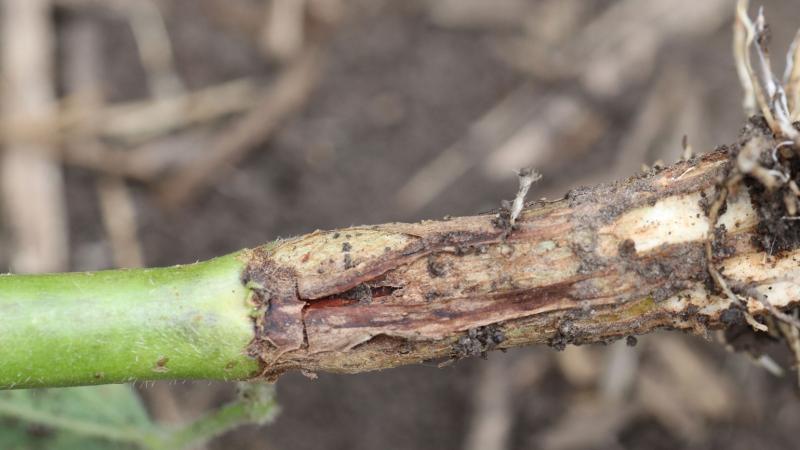
Discolored Site
Once a plant with this characteristic is found, pull the plant from the soil and evaluate the discolored site for any signs of soybean gall midge larvae (Figure 2).
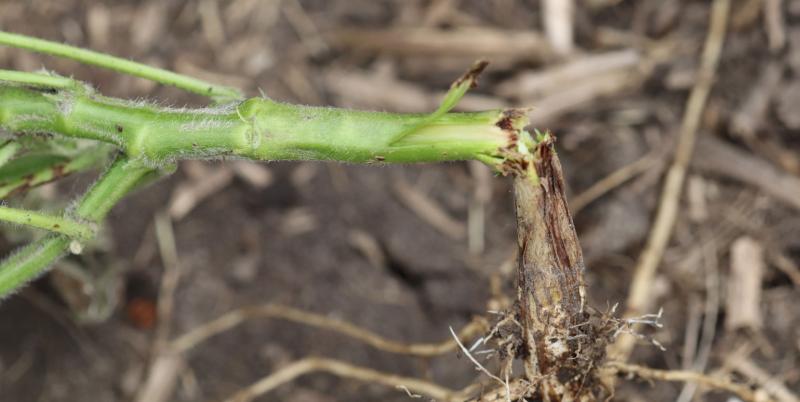
Break Point and Epidermis
Apply pressure above the discoloration and break the plant (Figure 3). Once the stem is broken, look for soybean gall midge larvae near the break point. Also, begin peeling back the epidermis in the discolored area on the stem.
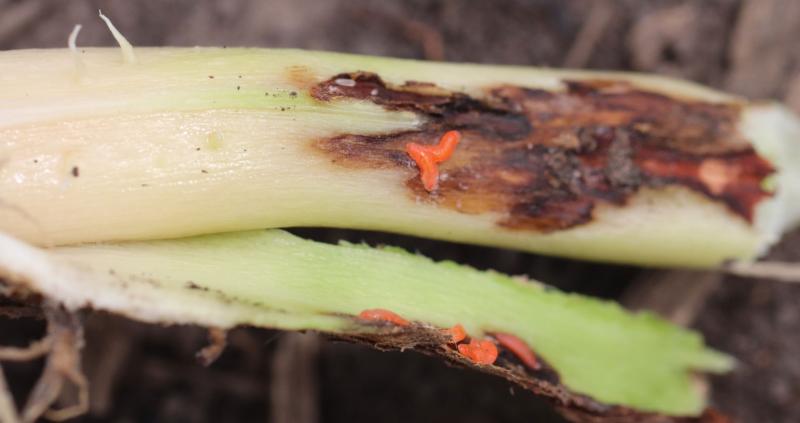
Larvae Presence
When soybean gall midge larvae are present, you will find small white, pink or orange maggots on discolored areas of the epidermis and stem (Figure 4).


